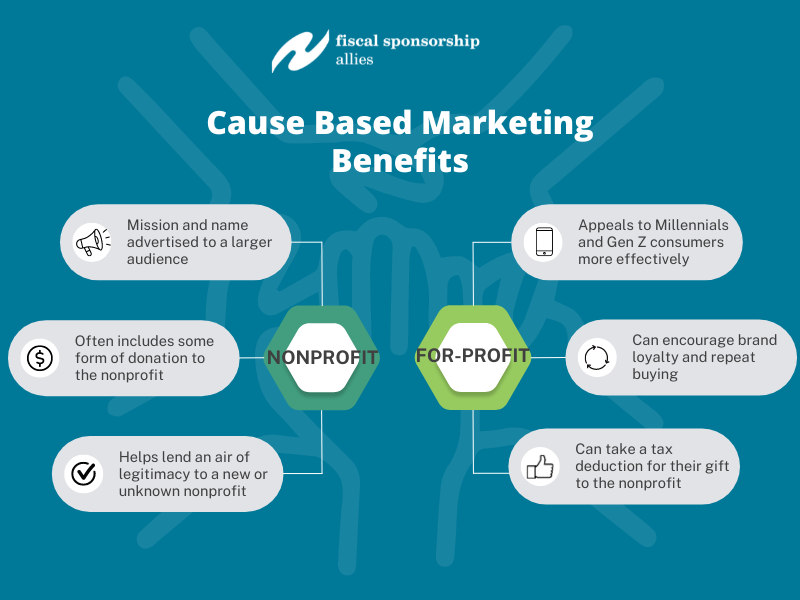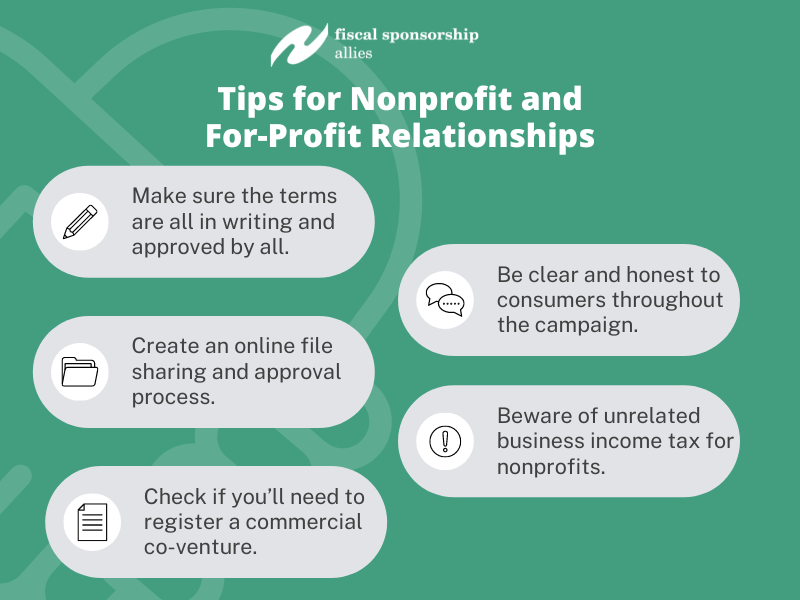Cause Based Marketing
Cause Based Marketing 101: How Nonprofits and For-Profits Can Work Together
What is cause based marketing (also known as cause-related marketing or simply cause marketing)? The term is commonly used to describe any partnership between a nonprofit and a for-profit organization. But truly, it refers to how for-profit companies use their relationships with nonprofits for a boost in a little good PR. Sometimes this looks like a “$1 of every purchase goes to X cause” and other times, it’s a little less direct. Today, we’ll cover the basics of cause based marketing and a term that’s closely related to it, but isn’t as widely known: commercial co-ventures.
Cause Based Marketing: The Benefits
Nonprofit organizations and for-profit businesses working together is nothing new. If done correctly, it can be beneficial to both organizations. So why is this strategy so popular?
For the nonprofit, it helps get your cause in the public eye. For-profit companies often have much larger marketing budgets, so they can afford to put your nonprofit’s name and cause in front of more people through multiple mediums, whether it’s Google Ads, social media ads, mailing campaigns or media features. More exposure to the public can help people who care about your cause find you, meaning more potential donors and volunteers. And if the company that’s advertising your cause is reputable, it can lend some credibility to your nonprofit too. Of course, the most direct benefit of these relationships for nonprofits is that the for-profit company will make some sort of donation to your organization.
For the for-profit company, cause based marketing can be a great way to connect with Millennials and Gen Z, who both report buying from brands that support their values at higher rates than previous generations. In fact, some consumers will even pay more for products or services that align with causes they care about. Cause based marketing can also be a great way to instill brand loyalty. When done correctly, these campaigns can be memorable and moving, bringing consumers back to your brand again and again. And as long as the cause you choose is something your target audience favors, cause based marketing can help drum up positive press, as media outlets will sometimes pick these up as feel-good stories. Finally, the contribution to the nonprofit is tax-deductible to the for-profit, so there is a tax benefit too.

Cause Based Marketing: How to Get Started
Often, cause based marketing involves a marketing campaign created primarily by the for-profit company. It could be as simple as a pizza restaurant putting out flyers that advertise 5% of proceeds on a certain night will go to the local youth soccer league. Or it could be as complex as a multi-channel national campaign by a large brand. Truly, there is a wide array of what counts as cause-related marketing.
No matter what type of campaign is happening, it all begins with a relationship. If you run a nonprofit or a charitable program of some kind, building relationships with potential corporate sponsors doesn’t have to be scary. Start with people you already know. You might reach out to family, friends, co-workers or neighbors and ask them what their place of work does when it comes to charitable giving. Cause based marketing is sometimes the 1st experience a for-profit has with your nonprofit, but not often. Usually, cause based marketing happens between organizations that have an existing relationship. So if you’re looking to start a relationship with a for-profit company, here are three ideas to get their buy-in to your cause before you ask about cause related marketing opportunities:
Ask them to volunteer.
People are often happy to lend a hand and it helps get the company’s employees more invested in your cause. Hands-on experience can be a powerful way to learn about your mission. If you work within a cause where volunteering is difficult because of privacy concerns (like a domestic violence shelter, for example), have volunteers do landscaping for your building, organize your workspaces for staff or volunteer to help set up at a fundraising event. You can always do a brief pitch before the volunteers start to speak about the impact of your organization and the importance of your cause.
Have lunch.
It’s really that simple. Relationship-building involves meeting up with the other party even when you don’t need something. Invite them out to lunch to learn more about their company and you can give them information about the great things your nonprofit is doing too. Here’s the key: don’t ask for anything at your initial lunch. It’s about building a solid relationship before you go in for the ask.
Meet them where they’re at.
In marketing, it’s an age-old rule that people rarely buy the 1st time they see a brand or item. They need repeated exposure. This is true for nonprofits too. People rarely donate the first time they ever hear about your organization. Meeting your potential corporate partners where they already are, like at networking happy hours, can be a great way to get another touch point before asking to be part of a cause based marketing partnership.
Cause Based Marketing: Make it Legal and Beneficial

Cause-related marketing can be great for both a company and a charity, but be sure you’re putting the proper parameters in place. Creating this arrangement without the proper legal steps can put the nonprofit’s status at risk and can lead to fines or penalties for the business. There are five key things to remember when you’re starting out with cause based marketing:
Put it in writing.
Make sure both the nonprofit and the for-profit agree to the terms of your arrangement and that the terms are put in writing. In the agreement, include details like how the proceeds will be split, the dates or length of the campaign and who will be responsible for creating or contributing to the marketing efforts.
Create a sharing and approval process.
Because cause based marketing efforts often include the name and logo of the nonprofit and the business, both entities should have someone who can review and approve the campaign before it goes live. It’s also a great idea to have one place to share files so everyone who needs them has access to brand colors, logos, and any pieces of the campaign that need approval. File sharing solutions like Dropbox or Google Drive can be great for this.
Check if you need to register.
In most states, there’s a registration you’ll need to do to make sure your cause-related marketing is done legally and doesn’t put the business or the nonprofit at-risk for legal troubles or fines. The nonprofit’s status as a nonprofit can even be put at-risk. This registration rule usually kicks in when this arrangement is going to happen regularly. So if you do a one-time Christmas promotion, most states won’t require you to register. But if you’re doing this on an ongoing or more frequent basis, you’ll probably need to register. In most states, it involves registering a commercial co-venture (sometimes called charitable sales promotion).
Be clear and honest in your efforts.
Businesses can get into legal trouble for false advertising if their ads are misleading or dishonest about how profits will be shared with the nonprofit. Be transparent. Whether it’s $1 from every sale goes to the charity or 10% of proceeds up to $10,000, it matters how you communicate this with consumers. If there’s a limit to the amount the for-profit will give, make it clear.
Beware UBIT.
It’s best not to have the nonprofit advertise the for-profit organization’s services or goods. You can absolutely say their company supports your charitable cause, but be careful how you do it. Nonprofits are regulated about what economic activities they can be involved in, so heavily promoting a product or service can actually lead to losing your tax exempt status and triggering UBIT (unrelated business income tax).
Cause Based Marketing: What if I don’t have 501c3 status yet?
If your charitable program would like to accept donations through cause based marketing or a commercial co-venture, but you don’t have 501c3 status yet, don’t worry. There is a way to get the best of both worlds: fiscal sponsorship. Fiscal Sponsorship is a legal arrangement between an established 501(c)(3) nonprofit organization (the sponsor) and a new charitable program or project (the sponsee) that allows the established project to incubate the new program/project. In this case, some fiscal sponsors will allow you to participate in one of these arrangements so you can still accept tax deductible donations from the company without having your own nonprofit status yet.
If you’re ready to get started accepting tax deductible donations without your own 501c3 status, apply for fiscal sponsorship today.


